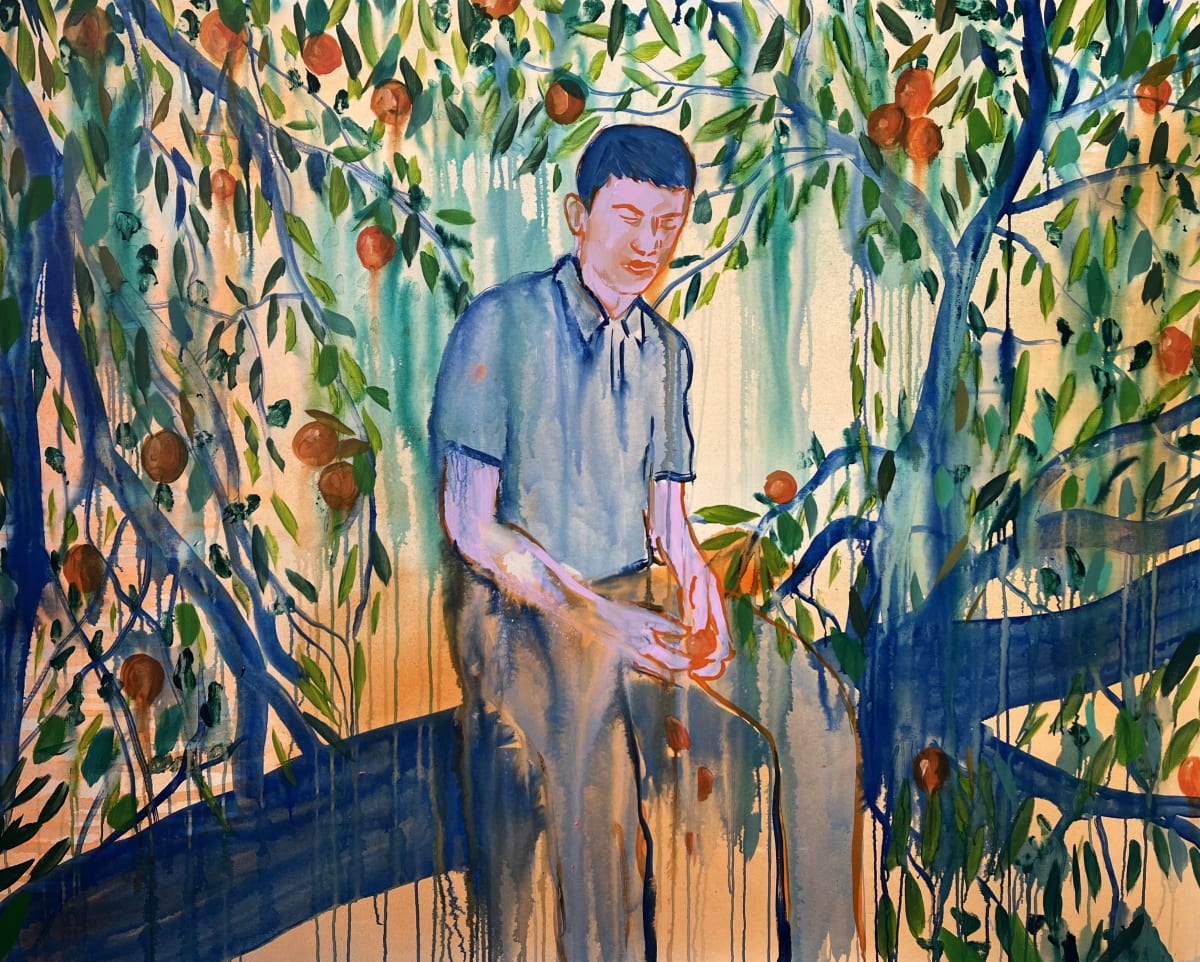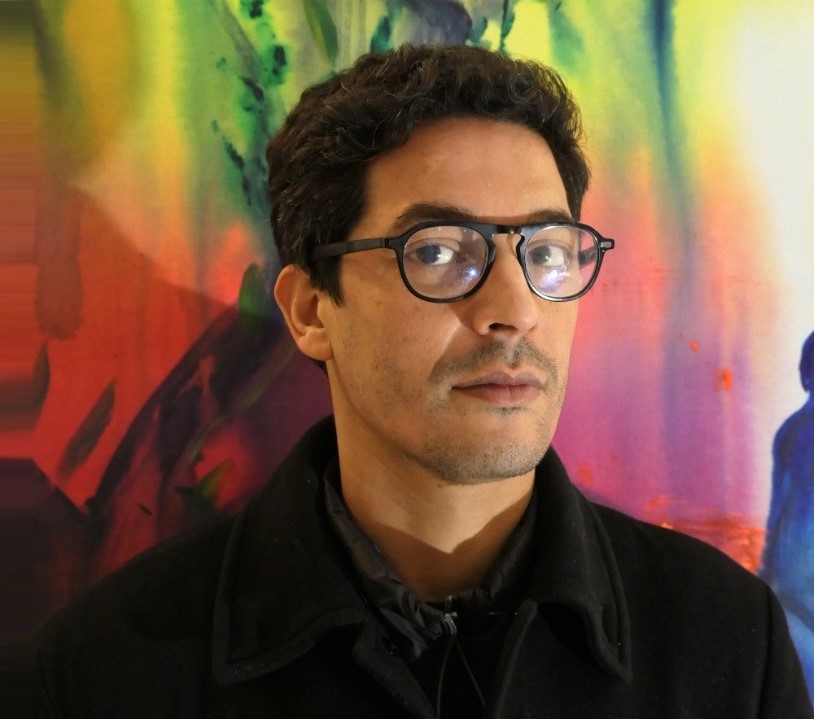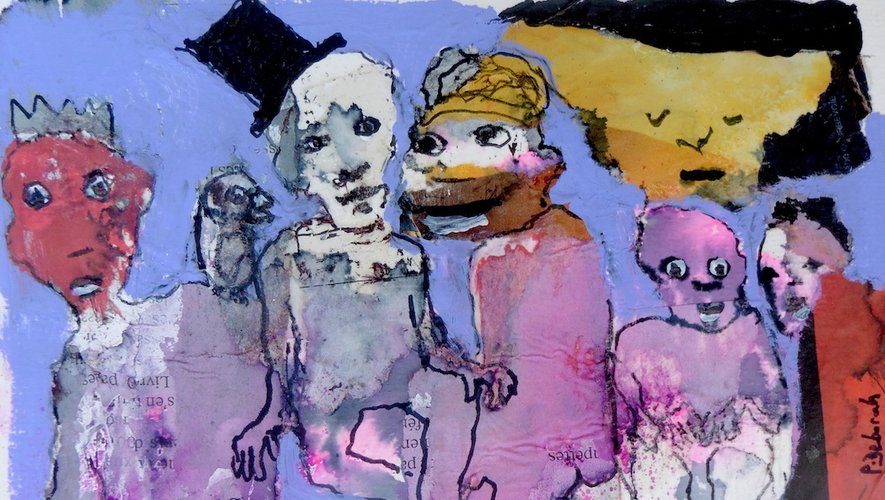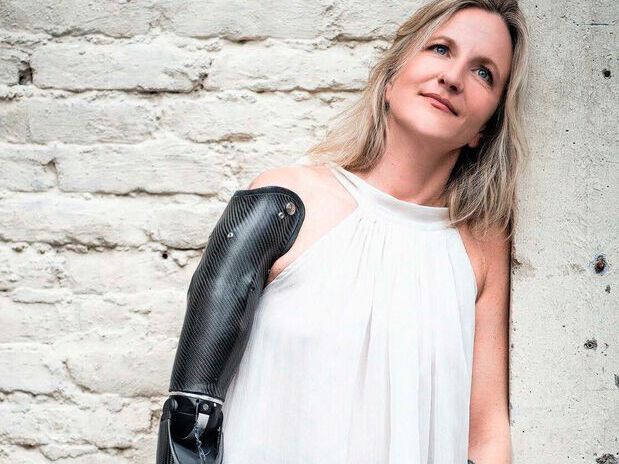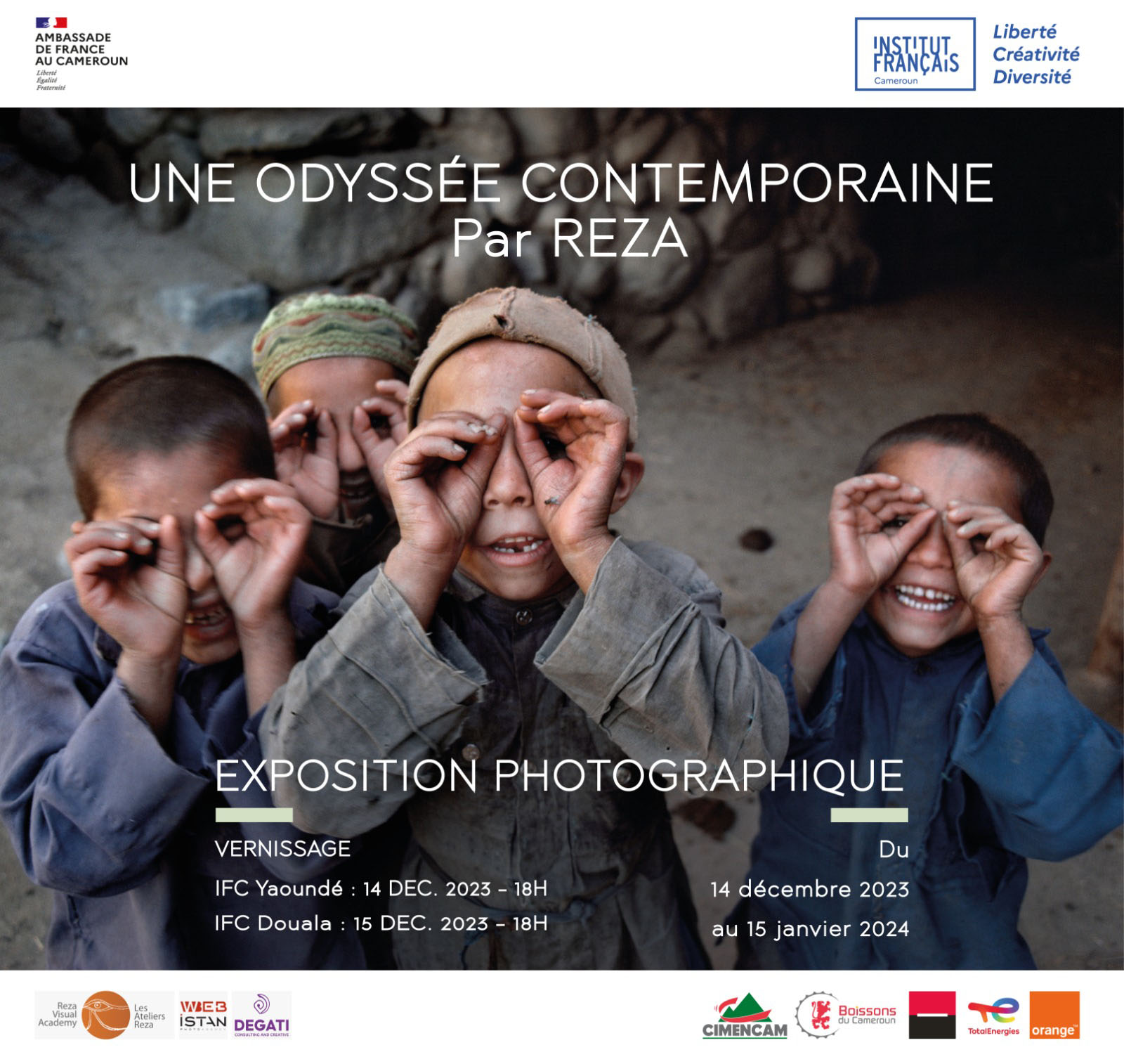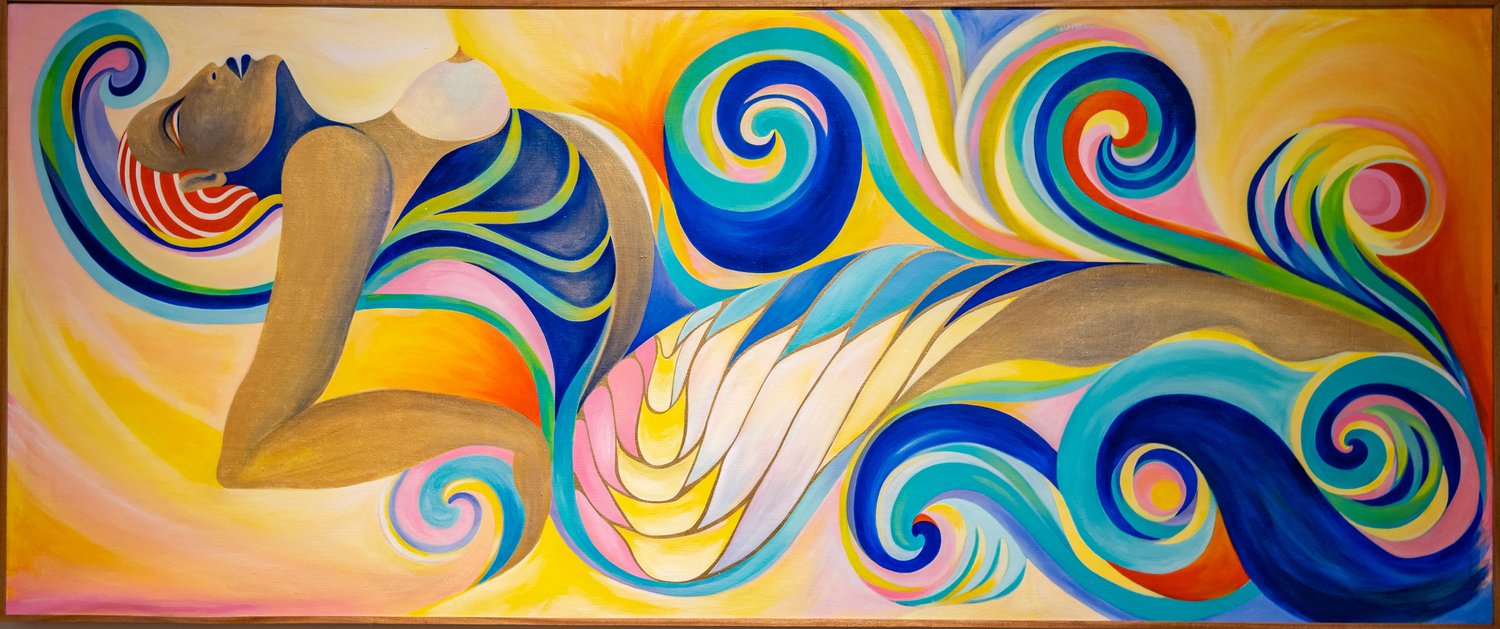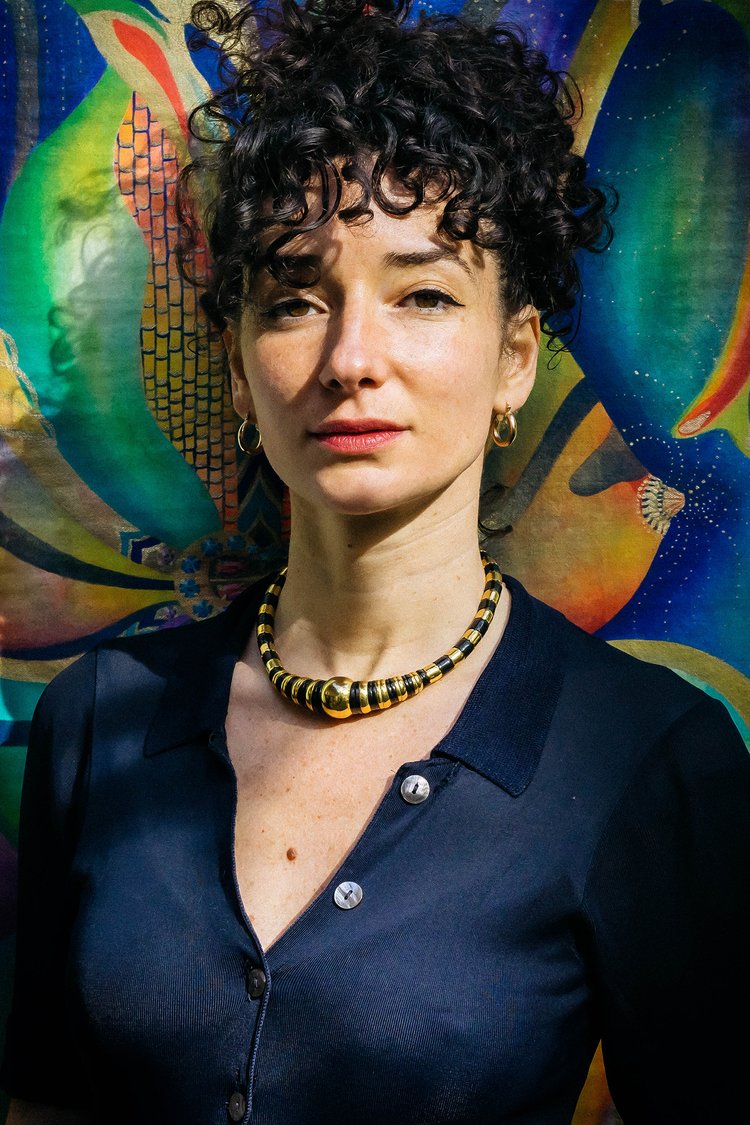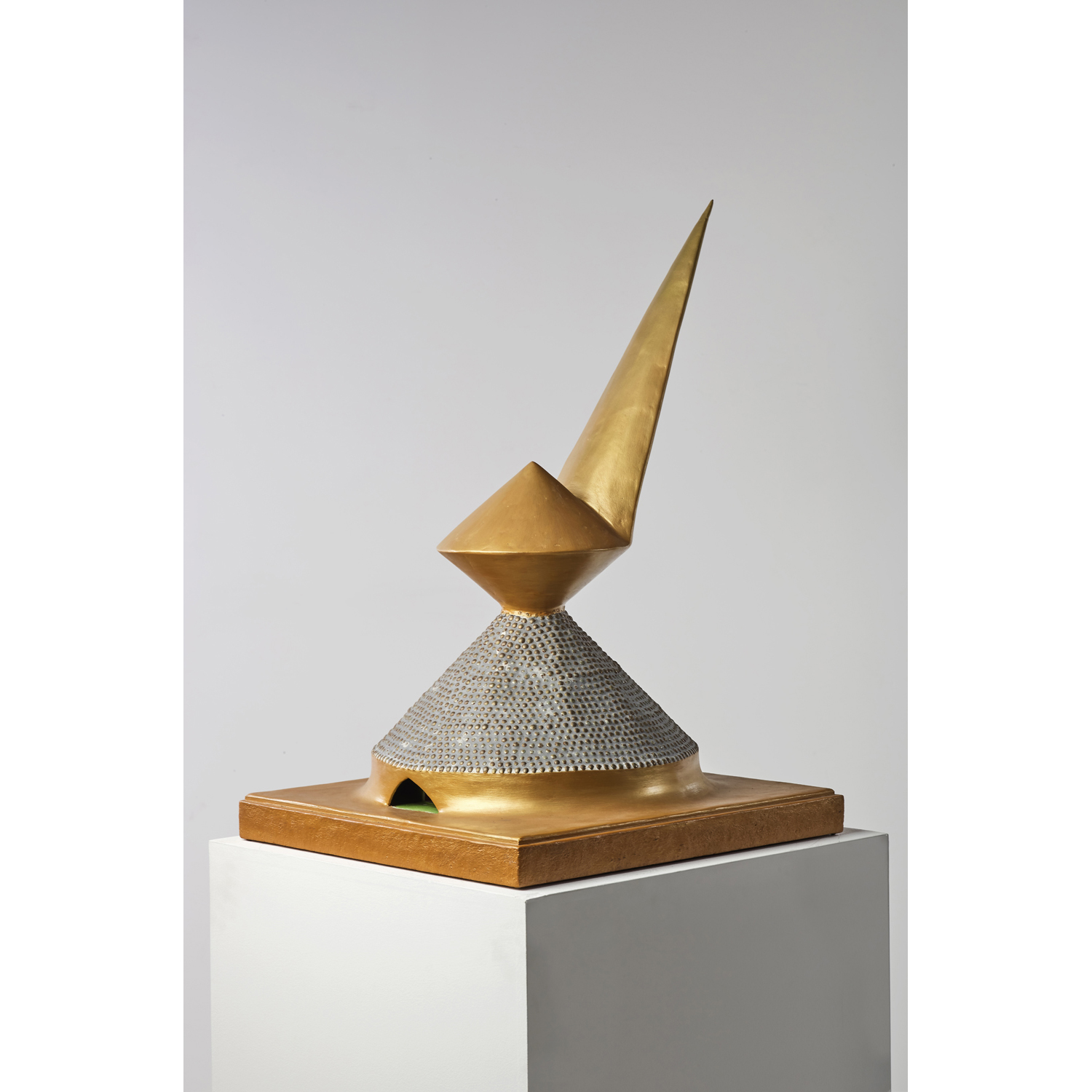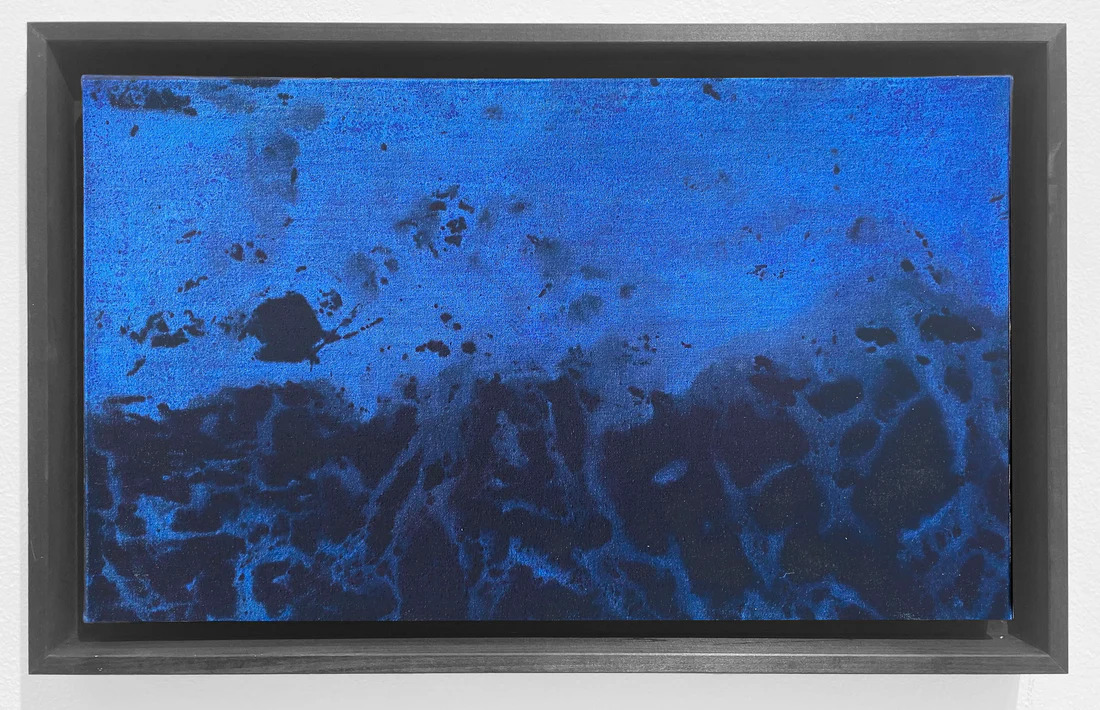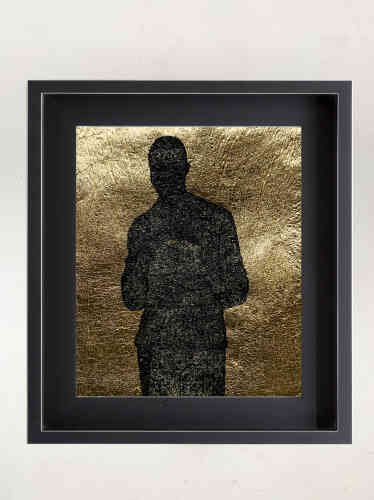

Clay APENOUVON, TOGO – FRANCE
Biography
Clay Apenouvon was born in 1970 in Lomé, Togo. As a child, he had a conflictual relationship with the school system. Far from the constraints imposed by school, he built, created and invented. And so, from an early age, it is in creativity that the artist finds the source of his fulfillment. Having turned his back on school for good, he began an apprenticeship in a silk-screen printing workshop. This experience was to prove decisive in making him fully aware of his artistic talent. Fascinated by the power that images can exert on people, and having mastered the techniques of painting and drawing, he asserted his desire to give his creation a greater scope and to fulfill himself as an artist. He returned to reading and the desire to learn, drawing artistic inspiration from books. In 1992, he left Togo for France. In Paris, Clay met a number of artists, including Claude Viallat, a leading figure in the Support/Surface movement. He also took an interest in the Nouveau Réalisme movement, whose art is characterized by an appropriation of reality. These discoveries nurtured his artistic reflection on the creation of the work of art by adding the substance of the mind to the object. The work is then the tangible embodiment of the artist's thought. Clay Apenouvon then discovered LM plastique noir (black stretch plastic film), frequently used in international trade to wrap and protect goods of all kinds. The properties and characteristics of this material, and the symbolism the artist associates with it, make it a recurring element in his work. The very characteristics of plastic are interesting. It is the material with which imitations or substitutes for objects are made, and from which works of art are created. The lightness of the material contrasts with the weight of the meanings the artist gives to the work. Taking advantage of the installation as a means of presentation, his “Plastic Attack” series questions the way in which public opinion grasps ecological issues by highlighting the abundance of plastic in our environment. This invasive and toxic material, still widely used and consumed, becomes a metaphor for our paradoxes. Awareness of the ecological disaster underway, of its present and future consequences, and of the danger our lifestyles pose to the sustainability of the environment, is increasingly widespread. Yet aspirations and dreams are still often fulfilled through forms of consumption and enrichment. In October 2013, Clay Apenouvon was deeply shocked by the shipwreck off Lampedusa. In search of a better life in Europe, thousands of young Africans lost their lives during the dangerous crossing of the Mediterranean Sea. Clay Apenouvon uses LM plastique noir (black plastic), present in many of his works, to reflect these human tragedies, which are often publicized in the media, but whose scale and gravity are difficult to grasp through press reports. His works take on a tragic blackness, as he draws a parallel between the oil slick and the bodies of shipwrecked migrants washing up on European shores. Through this violent and disturbing metaphor, inspired by the media, the artist denounces the indifference of public opinion to these human catastrophes, as well as the dehumanization produced by political narratives and debates on immigration. To restore the humanity of each individual lost at sea, Clay places everyday objects such as children's toys, wallets and shoes in his installations. These ownerless objects are reminders of lives and elements of personal histories. The ordinary, universal nature of the objects chosen brings the viewer closer to these migrants shipwrecked at sea, giving the works a particular strength. Clay Apenouvon also uses the survival blankets used to protect people who have survived shipwrecks or sleep on the streets on winter nights. Often these people are migrants. The shine of the plastic from which these blankets are made is similar to gold leaf. It is, in fact, the gold of the poor. The blanket thus symbolizes the experience of migrants who have left the African continent in the hope of a better life, which turns out to be an illusion as, once they arrive, they come up against a very different reality. Very interested in the world of dance (in 2019, he will be collaborating with the corps de ballet of the Paris Opera as part of Parade for FIAC), Clay Apenouvon recently teamed up with dancer and choreographer Zora Snake to create “Les masques tombent”, a performance questioning the after-effects of colonization on the African continent. The artists address the restitution of African cultural goods, highlighting the issues involved in returning these objects. During the performance, the dancer will use his body movement to make contact with three sculptures embodying the spirits of objects once despoiled. During this dance, the violence with which his body sometimes strikes the ground echoes the suffering of the ancestors. Before returning to the stage, the dancer strolls through the streets. Faced with the dance of this body, the surprise and concern of passers-by give way to curiosity and fascination. This performance invites spectators to engage in a dialogue with their past, to reweave the broken link between these objects and the history to which they bear witness. Source : https://clayapenouvon.com/biographie/
